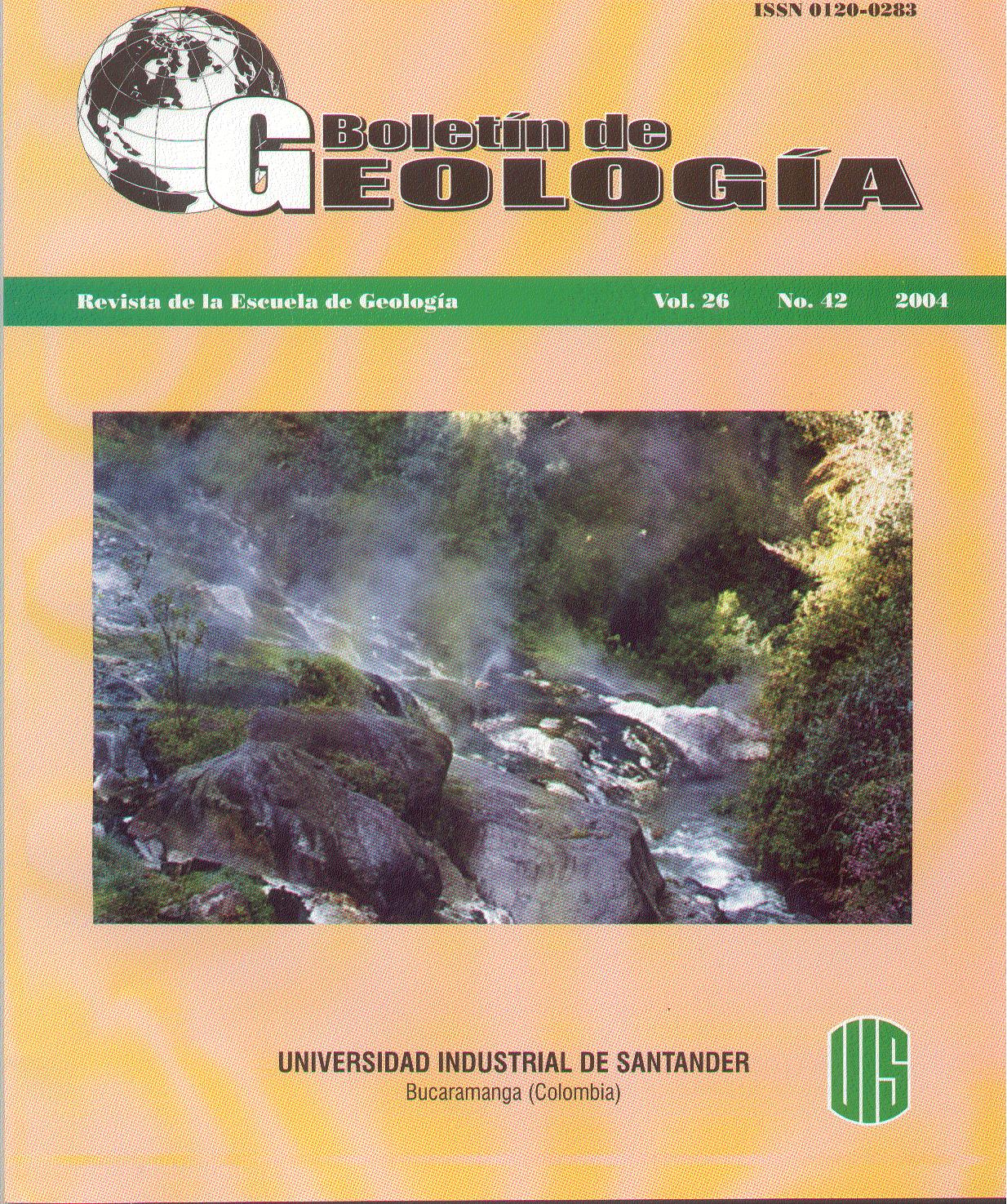Chemically sector-zoned garnets in the metapelitic rocks of the Silgará Formation in the central Santander Massif, colombian andes: occurrence and growth history
Published 2004-03-25
Keywords
- Silgará Formation,
- Santander Massif,
- chemically sector-zoned,
- garnet,
- metamorphism
How to Cite
Abstract
Almandine-rich garnet in the Silgará Formation metapelitic rocks in the central Santander Massif usually shows concentric normal chemical zoning. However, different types of garnet zoning have been reported, including chemically sector-zoned garnet, which is described here. Recent studies reveal additional discoveries of this type of zoning in different localities. Textural sector-zoned garnets have been observed in the staurolite-kyanite metamorphic zone of the Silgará Formation. They are generally fine-grained (0.25-2.00 mm in diameter), and occur in quartz-rich bands with other textural types of garnet (skeletal and poikiloblastic). The study of the chemically sector-zoned garnet indicates that it has grown in the latest stage of the Silgará Formation metamorphism, during the emplacement of orthogneiss masses. Studies on garnet from the Silgará Formation pelitic rocks have shown the importance of this as a key piece for interpretation of the tectono-metamorphic history of this metamorphic unit.
Downloads
References
.
Barker, A. (1990). Introduction to metamorphic texturesand microstructures. Chapman & Hall, New York, 170p.Bence, A., and Albee, A. (1968). Empirical correctionfactors for the electron microanalysis of silicates andoxides. Journal of Geology, Vol. 76, pp. 382-403
Boinet, T., Bourgois, J., Bellon, H., and Toussaint, J.(1985). Age et repartition du magmatism premesozoiquedes Andes de Colombie. Comptes rendus hebdomadairesdes séaces de L’Académie des Sciences. Serie D: SciencesNaturalles, Vol. 300(II), pp. 445-450
Burton, K. (1986). Garnet-quartz intergrowths ingraphitic pelites: the role of the fluid phase. MineralogicalMagazine, Vol. 50, pp. 611-620
Castellanos, O. (2001). Chemical composition of therock-forming minerals in the Silgará formation and P-Tconditions in the Mutiscua area, Santander Massif,Eastern Cordillera, Colombia. Master Thesis, ShimaneUniversity, Matsue (Japan), 146p.
Ferguson, A., Harley, P., and Lloyd, G. (1980). On themechanical interaction between a growingporphyroblasts and its surrounding matrix. Contributionsto Mineralogy and Petrology, Vol. 75, pp. 339-352
Finlay, A., and Kerr, A. (1979). Garnet growth in ametapelite from the Moinian rocks of NorthernSutherland. Contributions to Mineralogy and Petrology,Vol. 71, pp. 185-191
Goldsmith, R., Marvin, R. & Mehnert, H. (1971).Radiometric ages in the Santander Massif, EasternCordillera, Colombian Andes. U.S. Geological SurveyProfessional Paper, Vol. 750-D, pp. D41-D49
Hollister, L. (1970). Origin, mechanism, andconsequences of compositional sector-zoning instaurolite. American Mineralogist, Vol. 55, pp. 742-766
Kouchi, A., Sugawara, Y, Kashima, K., Sunagawa, I.(1983). Laboratory growth of sector-zonedclinopyroxenes in the system CaMgSi2O6-CaTiAl2O6.Contributions to Mineralogy and Petrology, Vol. 83, pp.177-184
MacQueen, J., and Powell, D. (1977). Relationshipsbetween deformation and garnet growth in Moine(Precambrian) rocks of western Scotland. GeologicalSociety American Bulletin, Vol. 88, pp. 235-240
Olimpio, J, and Anderson, D. (1978). The relationshipbetween chemical and textural (optical) zoning inmetamorphic garnets, South Morar, Scotland. AmericanMineralogist, Vol. 63, pp. 677-689
Powell, D. (1966). On the preferred crystallographicorientation of garnet in some metamorphic rocks.Mineralogical Magazine, Vol. 35, pp. 1094-1109
Rice, A., and Mitchell, J. (1991). Porphyroblast texturalsector-zoning and matrix displacement. MineralogicalMagazine, Vol. 55, pp. 379-396
Spear, F. (1993). Metamorphic Phase Equilibria andPressure-Temperature-Time Paths. Mineralogical Societyof America MONOGRAPH SERIES, Washington, DC,799p.
Takasu, A., and Kondo, Y. (1993). Color map photos ofthe Sambagawa garnets. Earth Science, Vol. 47, pp. 1-3
Kitamura, M., Wallis, S., and Hirajima, T. (1993). Sectorzoning and surface roughening of garnet in theSambagawa metamorphic rock. Proceedings 6th Topic.Meet. Crystal Growth Mechanism, pp. 215-220
Shirahata, K., and Hirajima, T. (1995). Chemically sector-zoned garnet in Sambagawa schists, its mode ofoccurrence and growth timing. J. Japan. Assoc. Min.Petr. Econ. Geol., Vol. 90, pp. 69-79
Ward, D., Goldsmith, R., Cruz, B., Jaramillo, C., yRestrepo, H. (1973). Geología de los Cuadrángulos H-12, Bucaramanga y H-13, Pamplona, Departamento deSantander. U.S. Geological Survey e Ingeominas. BoletínGeológico, Vol. XXI (1-3), 132p
Yardley, B. (1989). An introduction to metamorphicpetrology, Longman, Harlow, England, 248p
